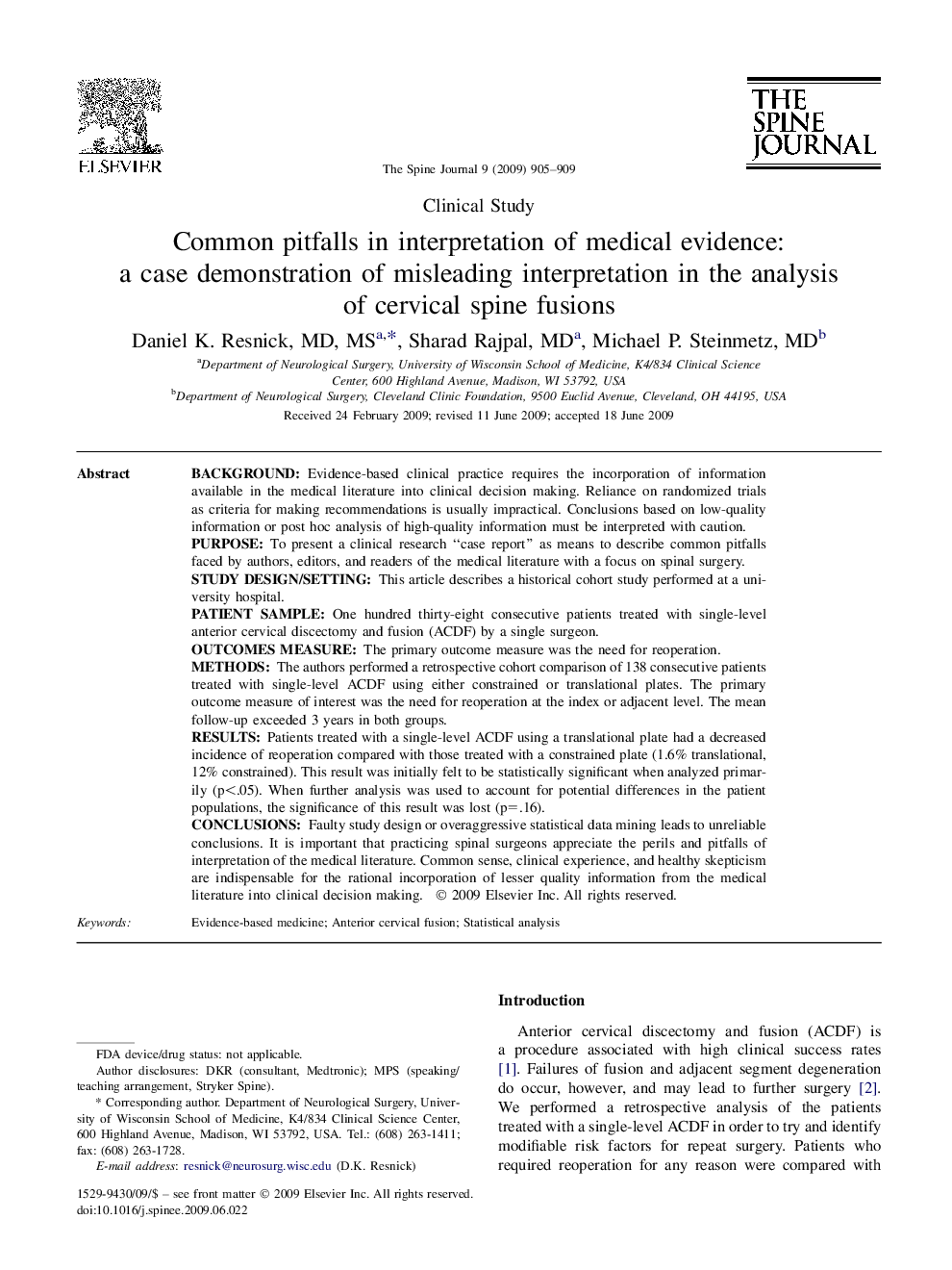| کد مقاله | کد نشریه | سال انتشار | مقاله انگلیسی | نسخه تمام متن |
|---|---|---|---|---|
| 4099432 | 1268640 | 2009 | 5 صفحه PDF | دانلود رایگان |

BackgroundEvidence-based clinical practice requires the incorporation of information available in the medical literature into clinical decision making. Reliance on randomized trials as criteria for making recommendations is usually impractical. Conclusions based on low-quality information or post hoc analysis of high-quality information must be interpreted with caution.PurposeTo present a clinical research “case report” as means to describe common pitfalls faced by authors, editors, and readers of the medical literature with a focus on spinal surgery.Study design/settingThis article describes a historical cohort study performed at a university hospital.Patient sampleOne hundred thirty-eight consecutive patients treated with single-level anterior cervical discectomy and fusion (ACDF) by a single surgeon.Outcomes measureThe primary outcome measure was the need for reoperation.MethodsThe authors performed a retrospective cohort comparison of 138 consecutive patients treated with single-level ACDF using either constrained or translational plates. The primary outcome measure of interest was the need for reoperation at the index or adjacent level. The mean follow-up exceeded 3 years in both groups.ResultsPatients treated with a single-level ACDF using a translational plate had a decreased incidence of reoperation compared with those treated with a constrained plate (1.6% translational, 12% constrained). This result was initially felt to be statistically significant when analyzed primarily (p<.05). When further analysis was used to account for potential differences in the patient populations, the significance of this result was lost (p=.16).ConclusionsFaulty study design or overaggressive statistical data mining leads to unreliable conclusions. It is important that practicing spinal surgeons appreciate the perils and pitfalls of interpretation of the medical literature. Common sense, clinical experience, and healthy skepticism are indispensable for the rational incorporation of lesser quality information from the medical literature into clinical decision making.
Journal: The Spine Journal - Volume 9, Issue 11, November 2009, Pages 905–909